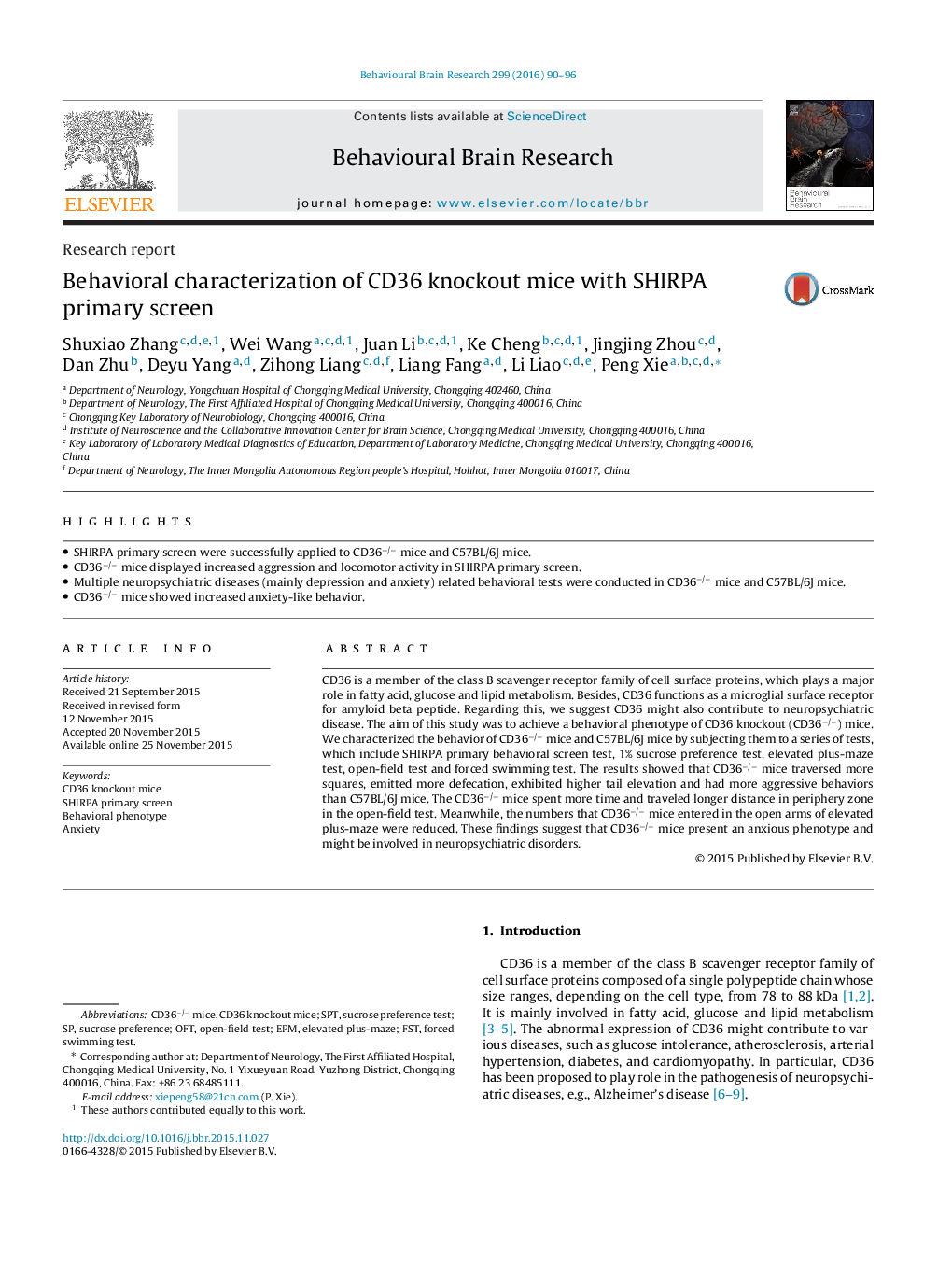| Article ID | Journal | Published Year | Pages | File Type |
|---|---|---|---|---|
| 6256231 | Behavioural Brain Research | 2016 | 7 Pages |
â¢SHIRPA primary screen were successfully applied to CD36â/â mice and C57BL/6J mice.â¢CD36â/â mice displayed increased aggression and locomotor activity in SHIRPA primary screen.â¢Multiple neuropsychiatric diseases (mainly depression and anxiety) related behavioral tests were conducted in CD36â/â mice and C57BL/6J mice.â¢CD36â/â mice showed increased anxiety-like behavior.
CD36 is a member of the class B scavenger receptor family of cell surface proteins, which plays a major role in fatty acid, glucose and lipid metabolism. Besides, CD36 functions as a microglial surface receptor for amyloid beta peptide. Regarding this, we suggest CD36 might also contribute to neuropsychiatric disease. The aim of this study was to achieve a behavioral phenotype of CD36 knockout (CD36â/â) mice. We characterized the behavior of CD36â/â mice and C57BL/6J mice by subjecting them to a series of tests, which include SHIRPA primary behavioral screen test, 1% sucrose preference test, elevated plus-maze test, open-field test and forced swimming test. The results showed that CD36â/â mice traversed more squares, emitted more defecation, exhibited higher tail elevation and had more aggressive behaviors than C57BL/6J mice. The CD36â/â mice spent more time and traveled longer distance in periphery zone in the open-field test. Meanwhile, the numbers that CD36â/â mice entered in the open arms of elevated plus-maze were reduced. These findings suggest that CD36â/â mice present an anxious phenotype and might be involved in neuropsychiatric disorders.
